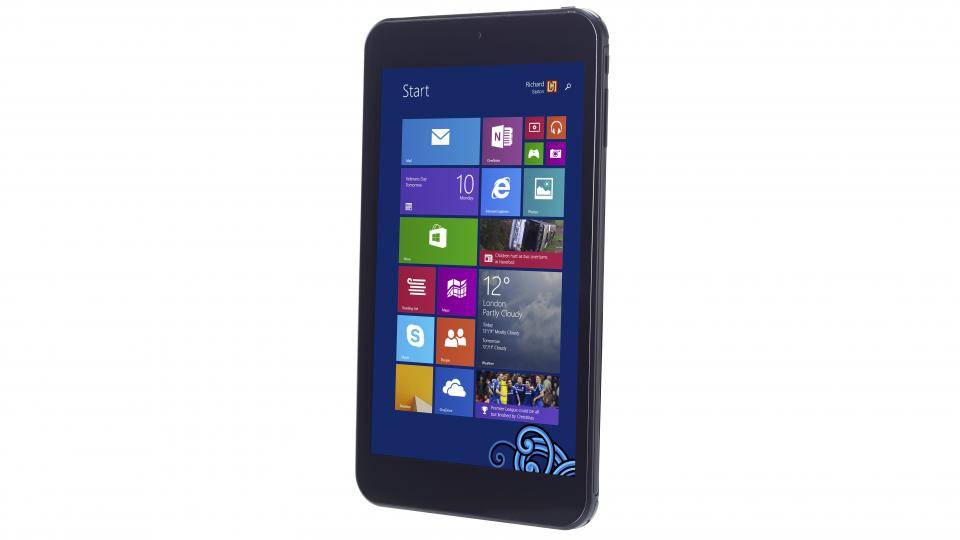The Linx 7 is the cheapest Windows 8.1 tablet we’ve ever tested. At only £80 it immediately grabbed our interest, and this was piqued even further when we found out it comes with a year’s subscription to Office 365 Personal. This alone is worth around £50, and will let you use the Office suite on one PC or Mac, one tablet and one smartphone, so you’re not even limited to just using Office on the Linx 7 itself. You can even get a £30 rebate if you trade in an old tablet, although the appeal in doing this will very much depend on what tablet you might have lying around

We weren't expecting a huge amount considering the low price, but found ourselves pleasantly surprised by the Linx 7’s build quality and design. The thin bezel around the screen helps the already-compact tablet feel even smaller. At 9.5mm thick it’s not the thinnest tablet you’ll ever see, but isn't too chunky for a budget model. It's also not too heavy at 280g, so is comfortable to hold one-handed and we were happily able to do so for extended periods.
The chassis is made from an unexciting matt black plastic that at least feels robust. There wasn’t any noticeable flex anywhere to the chassis, which is always reassuring. Along the top of the tablet you’ll find a Micro USB charging port, Micro HDMI for connecting to an external display, a headphone jack and an exposed microSD slot. You can install a microSD card up to 64GB in capacity. Our review model came with 32GB of storage, and a browse of the Linx tablets website states that tablets are 32GB for a limited time only, after which they will only come with 16GB.
Although the Linx 7’s build quality and design were a real surprise, the screen shows where costs have been cut. The Linx 7 has a 1,280x800 display, which is the resolution we’re used to seeing with lower-cost Windows tablets, but as these pixels are packed on to a small 7in panel that leaves a respectable pixel density of 215ppi.
However, the real problem with the display is its grainy quality. There's also distinct backlight bleed from the top and bottom of the screen. This is most noticeable when the screen is displaying dark images. The screen itself also picks up fingerprints more easily than most tablets, so every touch of the screen resulted in greasy marks, and the screen soon became very grubby. Having to constantly wipe down the screen proved frustrating after a while.
Our calibrator also showed the display had poor colour accuracy, with it only able to produce 62.9% of the sRGB colour gamut. This is below average, but still a fraction higher than the similarly low-priced Samsung Galaxy Tab Lite Android tablet. Black levels were also poor but marginally better than the Samsung tablet, with a score if at 0.49 cd/m2. Contrast ratio is a paltry 625:1.